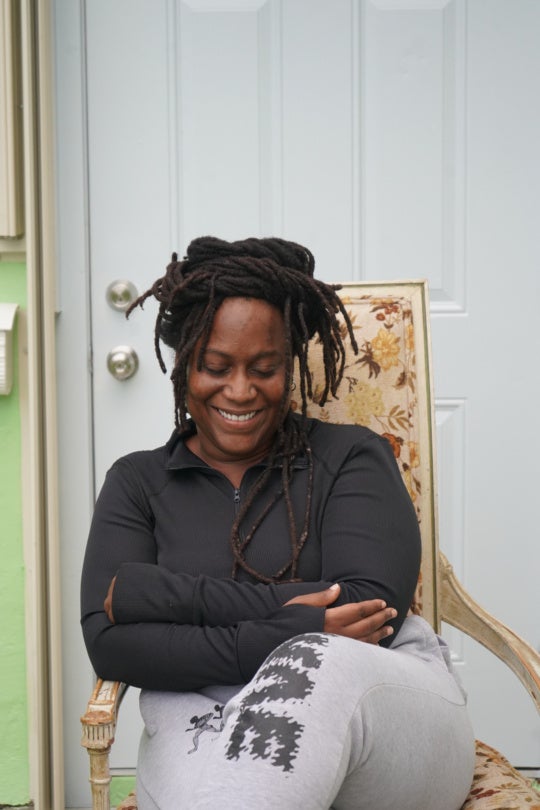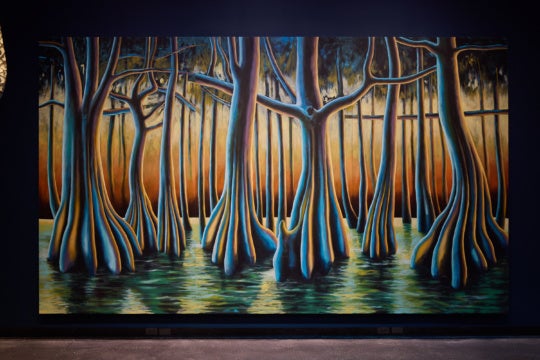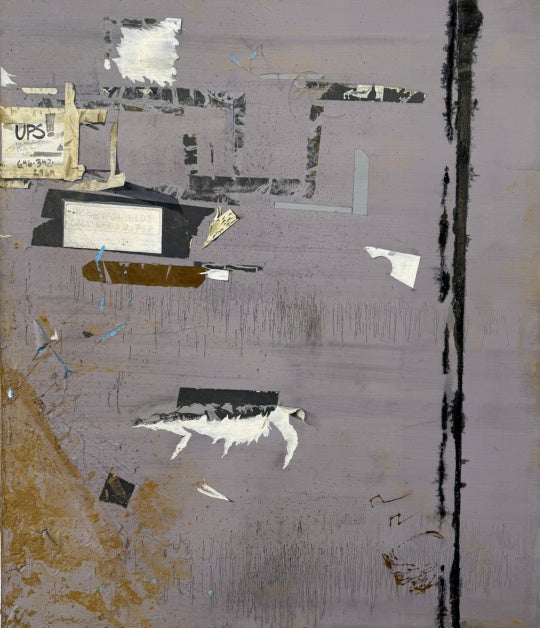
An exhibition as ambitious the Atlanta Biennial (dubbed ATLBNL) can only succeed when grounded in rigorous specificity. Achieving such grand goals, namely to feature a diverse array of artworks capable of offering a coherent and convincing visual definition of current art in the South (not just Atlanta), requires robust argumentation. Further, such a definition must be sufficiently nuanced to avoid cliché. Steering clear of gaudy spectacle, such a special exhibition should nonetheless include high caliber works that impress viewers materially and conceptually. One might hope to find among such artworks a delicate balance between criticality, pride, and optimism.
Because this is the first biennial mounted by Atlanta Contemporary after a nine-year hiatus, it is perhaps more productive to view this iteration as a harbinger of future possibilities, rather than focus solely on shortcomings. That said, its inadequacies need to be discussed constructively in the hope for future success.

The most glaring concern with the biennial, curated by a team including Contemporary curator Daniel Fuller, is the lack of clarity with which the exhibition at large constructs an argument. In general, the objects are haphazardly arranged, but it’s doubtful that even the most resourceful curation could have made significant improvements given the selection of works on view. A scarcity of exhibition literature only cements the lack of a focused argument. Judiciously deployed wall labels could have woven a compelling story, and accompanying biographical information could have included, at the very least, kernels of unifying themes instead of lists of commendations pulled directly from artists’ websites.

The biennial’s most unconscientious miscue, in fact, owes to poor placement without adequate labeling or explanation. Guy Church’s quaint figural drawings are grouped with Ridley Howard’s masterfully handled paintings, but the result is far from an artful comparison between styles or materials. Curators were doubtlessly attempting to juxtapose the autodidact Church with the formally trained Howard. However, since no curatorial or biographical text explains that the former is self-taught and the latter has a nearly a decade of formal education to his name, the resulting configuration only does Church a disservice, and is probably ill-conceived regardless of absent explanatory text.

Too many of the included objects lack distinction or suffer from unimpressive execution. A few examples on view of fascinating material manipulations that challenge mediums’ logical constraints get lost in a muddle of artworks that are largely uninteresting. Of the exhibition’s selection of two-dimensional art, too many forgettable works exacerbate its haphazard feel; poor representation of high quality fine art photography is most noticeable. Moreover, Atlanta Contemporary’s galleries offer opportunities for large-scale visual contemplations on shifting urban fabrics in metropolises across the New South. The absence of serious reflection on Southern city-making is curious, given how germane the subject of place has been to the regional dialogue. A commissioned mural on one of the gallery’s walls would have been most impressive.

A few praiseworthy moments deserve mention. Christina West’s Buffer is a concise articulation of the Atlanta artist’s figural sculpture at large. The object pushes her recent work with busts, in which she slices away at figural forms to reveal inner cores, to its extreme. Here, a bustlike shape is divided into halves separated by about an inch of space. Each half is composed of a faceless figure; the inward-facing surfaces are where their faces would be, but only the backs of heads are discernible. Vaguely sexual in form, the bust’s two halves refuse to touch, and this tense, empty space is a titillating and devastating summation of how West’s art communicates alienation from oneself and from others.
At the exhibition’s entrance, Alabama-born Darius Hill’s Funkadelic Relic announces that race is among ATLBNL’s only discernible critical themes. The 8½-foot-long, wood and acrylic pick comb, and its counterparts on view in an adjacent gallery, are iconic, and among the most impressive fabrications included in the biennial. More, the sculptures magnify the pick’s cultural associations with black pride and, at a massive scale, pay glorious homage to the symbolic refusal to assimilate at the cost of hiding or destroying one’s natural features.

8½ by 4 feet by 8 inches.
Born in Kingston, Jamaica, and based in Florida, Sharon Norwood makes digital collages that also utilize black hair as a means of investigating race and historical representations of beauty. She sources 1840s images of upper class white women from the Metropolitan Museum of Art’s digital collection, and digitally manipulates them, adding tight, twisting hairlike scribbles over figures’ faces. Her linear marks shift between trompe l’oeil and pure gesture: Curly, kinky hairs are insistent yet self-conscious as they efface figures’ faces, then fall away into purely formal marks that echo lines representing landscaping, garb, and artist signatures in the original images. The marks become her own signature: an uncomfortable but defiant reminder of her presence in the work and of the presence of generations of people made invisible by racial and economic constructs of beauty. A ceramic sink covered with marks that mimic shaved hair is positioned alongside her digital prints, amplifying both the trompe l’oeil effect and the images’ self-conscious tone.

Where Norwood’s digital collages and ceramic sculpture encourage active examinations of concepts of beauty, Stacy Lynn Waddell’s gold leaf compositions offer active viewing experiences by urging onlookers to change their physical perspective. By shifting position, a view from behind a chain link fence becomes visible in one composition, obscured at first by its gold leaf on gold leaf construction. In another, one finds the image of an empty hoodie that once draped around the face of 17-year-old Trayvon Martin, who was fatally shot in 2012. The words “BLACK LIVES MATTER” in the North Carolina artist’s third featured work break down anagrammatically, eventually becoming “CRAK SAVE LITTLE BM.”
The gold leaf compositions are poignant reminders of absence, visibility, and the need to alter perspective to see something clearly, and they thoughtfully engage a national dialogue about inequality. Waddell’s works, and those of Norwood and Hill, are well-conceived, well-realized, and make clear statements about race relations in the United States. But the exhibition implies that race and racism are specifically Southern issues, and that these artists’ responses are specifically Southern simply because they’re black and happen to currently live in the South. These assumptions aren’t at all convincing. Including or commissioning an artwork that distinctly considers displacement in developing Southern metropolises, for example, could have been a more nuanced way to approach current racial dynamics in the South. Individual artists and collectives abound, from Atlanta’s downtown to Savannah’s midtown and beyond. An audacious and unexpected move could have been to source work from Macon’s Ampersand Guild. The artist collective and affiliated event space was a refuge for Samantha Hill and Ed Woodham during their abbreviated tenure with the Mill Hill Social Practice Residency Program.

With only a handful of remarkable objects, ATLBNL isn’t even among Atlanta’s most memorable fall exhibitions, let alone among this year’s top showings throughout the South. However, the venture is exciting, and its return after a nearly a decade could only entail conceptual hiccups and difficulty sourcing works of true excellence on short notice. One can only hope for better execution in the future, given some logistical improvements and a more refined scope.
Read our crowdsourced review of the biennial here.
ATLBNL is on view at Atlanta Contemporary through December 18. It was curated by Victoria Camblin, editor and artistic director of ART PAPERS (Atlanta); Daniel Fuller, curator, Atlanta Contemporary; Aaron Levi Garvey, independent curator and co-founder of Long Road Projects (Jacksonville); and Gia Hamilton, director, Joan Mitchell Center (New Orleans).
Jared Butler is an Atlanta-based critic.




